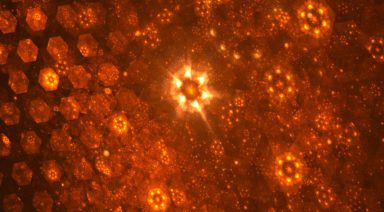Cloud Seeding; The Confirmed Weather Modification Program

There’s an undeniable human desire to manipulate every aspect of our world and the weather is no different. In our attempt to achieve this, the prospect of geoengineering has become a very real and very contentious reality. And while debates over chemtrails continue to rage, discussion of cloud seeding receives less attention, despite its recognized use.
For decades, millions of dollars have been spent implementing cloud seeding technology near ski resorts, bodies of water, and areas experiencing drought, yet scientific institutions studying the practice often describe its actual efficacy as unproven or highly conflicted. So, why do they keep doing it and is it safe?
What is Cloud Seeding?
Discovered by Vincent Shaefer, before it was refined by Kurt Vonnegut’s brother Bernard, the most common cloud seeding technology involves the dispersion of silver iodide in cloud water. Vonnegut and colleagues discovered the reaction while working for GE in Schenectady, NY in 1946.
Those familiar with Kurt Vonnegut’s seminal novel, Cat’s Cradle, might not be surprised to learn his brother’s cloud seeding discovery became the impetus for the notorious Ice-nine – the water polymorph developed to solidify mud for soldiers’ convenience, but which turned out to kill them upon contact with bodily tissue.
In reality, silver iodide isn’t the deadly compound Vonnegut imagined, but it’s use in manipulating weather has certainly sparked conspiracy and skepticism; particularly when it comes to weaponizing the weather.
And the U.S. government did, in fact, attempt to use cloud seeding to weaponize the weather during the Vietnam war. The once-classified Operation Popeye invoked rainfall in north Vietnam with cloud seeding missions conducted over a five-year period. According to documents later declassified, the operation was credited with increasing rainfall by 35 inches – more than four times the average annual rainfall in certain parts of the American southwest.
Contrary to the intention of Vonnegut’s imagined Ice-nine, the military anticipated cloud seeding technology to create mud and flooding in Vietnam, making it difficult for enemy troops to move efficiently.
Though the operation was claimed a success, it was eventually discontinued, possibly due to ambiguities in how that success was measured, as well as a Geneva treaty prohibiting weather weaponization. Since then, the military hasn’t admitted to any further cloud seeding, though it has been accused of it.
Is Cloud Seeding Safe?
Cloud seeding with silver iodide is allegedly safe as the amount of the compound used in a single session is pretty minuscule – typically 10 to 50 grams. The only reactions to the compound are listed as discoloration of the skin, but only after years of exposure. Pilots who have worked extensively with the compound have reported it turning their hands temporarily yellow.
Environmentally there seems to be little risk of contamination in water sources or crops, though some of the secondary effects have led to catastrophe in the past.
In 1952, a cloud seeding experiment dubbed Operation Cumulus, caused torrential downpours in Lynmouth, a small village in Devon, England – 35 people were subsequently killed after flooding destroyed homes, businesses, and local infrastructure.
More recently in 2009, flooding in the Saudi capital of Jeddah led to the deaths of 122 people after 2.76 inches of rain fell in just four hours – this was double the average annual rainfall and was believed to have been caused by cloud seeding. Similar incidents have occurred in other middle eastern countries that have attempted to use the technology to fight drought and arid climate.
Meanwhile, other countries have accused those with cloud seeding practices of stealing rain and precipitation from them. Something one might perceive to be a harbinger of weather modification warfare in the future. When everyone tries to control the weather, there will inevitably be disproportionate accumulations favoring those with more resources that can influence Mother Nature.
Cloud Seeding Conspiracy
There are also larger overarching concerns with weather manipulation technology when it comes to those polluting and degrading the environment. Though maybe less of a case with cloud seeding, weather manipulation could dissuade corporations and major polluters from cleaning up their act. Why switch practices that negatively impact the weather, when you could just pay to control it?
That pay for precipitation problem could become even more exacerbated and convoluted when the über wealthy start paying $100,000 to have clouds “overseeded” in order to prevent rain on their wedding day – but wait, this is actually a service one could currently purchase today. In fact, a large percentage of cloud seeding technology is used to benefit wealthy parts of the world where people want more precipitation for recreational activities or unsustainable farming and water use habits. Instead of curbing wasteful practices and reversing long-term detrimental trends, our solution is to engineer temporary or short-term solutions by essentially trying to hack the system.
And this has become the case with certain solutions to climate change, including Harvard scientist David Keith, who proposed spraying aerosols into the atmosphere to increase the planet’s albedo (its reflectivity). Keith says he believes injecting sulfuric acid into the upper reaches of the atmosphere could reflect enough sunlight to counter act rising global temperatures caused by climate change.
His proposal includes the use of hundreds and eventually thousands of annual flights with the sole purpose of spraying chemicals into the atmosphere to manipulate the weather. The only problem, which he admits himself, is that once this process was underway, it might have to continue indefinitely, eventually dumping millions of tons of chemicals into air.
Is it any surprise people are convinced that something like this is already underway?
For more on weather modification watch this episode of Open Minds with Dane Wigington:
Did Nixon Leave Behind Evidence of Aliens in the White House?

If there’s anyone with insight into the existence of extraterrestrials, it’s the President of the United States. But when the topic of disclosure comes up, Richard Nixon’s name appears infrequently compared to other presidents tied to the government’s ufological secrets. But according to the testimony of one confidential informant, not only has the government made contact, but Nixon left evidence of the existence of aliens in the White House.
And it remains there to this day, he says, hidden in a time capsule – its location known only to a handful of people. Though, Nixon claimed it would surface when the time was right.
That informant is Earl Robert “Butch” Merritt, a man with a storied career as a confidential agent for the Nixon administration. A man who participated in a variety of intelligence operations in the nascent years of what would later become the NSA’s COINTEL program used to surveil, infiltrate, and disrupt various organizations and target groups even before Watergate.
And while Merritt’s credibility might seem questionable when discussing alien disclosure, his career as an informant is well documented, as are his high-level government connections. Which is why his revelation of a clandestine conversation with Nixon regarding the existence of alien technology and a living extraterrestrial entity is hard to immediately dismiss.
Evidence of Aliens in the White House?
President Eisenhower is usually the first name that comes to mind when discussing the White House’s knowledge of an alien presence, particularly in regard to an apocryphal program known as MJ-12, or Majestic 12.
Essentially, MJ-12 was an alleged group of high brass military and government officials organized after the Roswell UFO incident to deal with the implications of an alien presence and its subsequent technology.
And it was that technology recovered from the Roswell crash that is believed to have led to exponential leaps in our technological advancements, many of which have been used to bolster the military industrial complex – an industry Ike so famously warned the world about before leaving office.
Though he didn’t immediately succeed him, Nixon was Eisenhower’s Vice President, making the ufological connection all the more intriguing. It was also relatively well known that Nixon believed in the existence of UFOs and extraterrestrials, despite his release of Project Bluebook’s conclusive analysis; an Air Force study known as the Condon Report, which allegedly put the existence of UFOs to rest.
But according to his testimony, Nixon divulged his knowledge of a “sophisticated intelligent being” to Merritt toward the end of his presidency when he realized the Watergate scandal was becoming an imminent threat. According to Merritt, Nixon claimed the being was alive and in government protection.
He says Nixon entrusted this information to him as he considered Merritt one of his only confidantes, asking him to personally deliver a letter on the subject to Henry Kissinger – a copy of which allegedly remains hidden today somewhere in the White House.
A Dark Journalist’s Disclosure
Merritt’s testimony is corroborated by Douglas Caddy, a man who acted as a defense attorney for the parties convicted in the Watergate scandal and who claims he knows where Nixon’s ET disclosure letter is hidden in the White House. The two published a book titled, Watergate Exposed: How the President of the United States and the Watergate Burglars Were Set Up as told to Douglas Caddy.
Interviews with both men, including Merritt’s accounts of meeting Nixon, and his subsequent mission as letter courier to Kissinger, can be found on the website of Daniel Liszt, an investigative reporter on government and alien conspiracies, who goes by the alias “Dark Journalist.”
Liszt’s interview with Merritt is fascinating in that it delves into his history as one of the most notorious informants for the president and for other city, state, and federal government entities, due to his cutthroat and non-conventional tactics.
In fact, a New York Times profile piece on Merritt confirms this history, focusing specifically on his role helping New York authorities reclaim the Kenmore Hotel – a drug-addled building in Manhattan that was one of the epicenters of the city’s criminal activity in the ’90s.
Merritt was an indispensable tool for Nixon’s Huston Plan – the aforementioned intelligence program to infiltrate and disrupt parties he felt threatened by, particularly political opponents and anti-war groups.
While serving as an informant under the Huston plan, Merritt says he was warned by one of his sources, a switchboard operator next to the Watergate Hotel named Rhita Reid, of the impending investigation into the administration. Merritt said he tried to warn Nixon, but that he wasn’t concerned at the time and didn’t foresee it’s major implications.
Despite this dismissal, Merritt claims he was one of Nixon’s most trusted sources and was even given nicknames including “003” – an obvious James Bond reference. So, when the Watergate scandal played out and the days of the administration waned, Merritt claims he was brought into a secret underground room beneath the White House where Nixon revealed the existence of an alien entity and technology housed at the infamous Nevada military base, Area 51.
“We have possessed knowledge and we have in our protection subjects from a planet X,” Nixon supposedly told Merritt. “Knowledge we obtained so vast and powerful, whoever possesses this knowledge would be the most powerful person in the world,” Merritt recounted.
Merritt claims Nixon then wrote out a lengthy letter that included encrypted formulae to be delivered to Kissinger. He also included two cassette tapes, before sealing the letter and writing something on its outer flap, omitting his normal signature. Nixon then strapped the letter to Merritt’s stomach and sent him to deliver it to its intended recipient for unknown reasons.
Now, he claims that letter remains hidden somewhere in the White House, its location known to he and Caddy who say they will only reveal its location if the National Archives allows one of them to be present to read the letter publicly.
What is there to make of this testimony? While incredibly intriguing at first, there are some pretty farfetched and bizarre aspects to Merritt and Caddy’s story that might be questionable.
It seems if Nixon wanted to clear his name in the annals of history, he would have released this information himself, whether at that moment or before his death. Though in every instance of a president’s alleged attempt at disclosure, the truth always seems to be stranger than fiction.
For more on a U.S. President’s attempt at disclosure check out this episode of Deep Space:




































